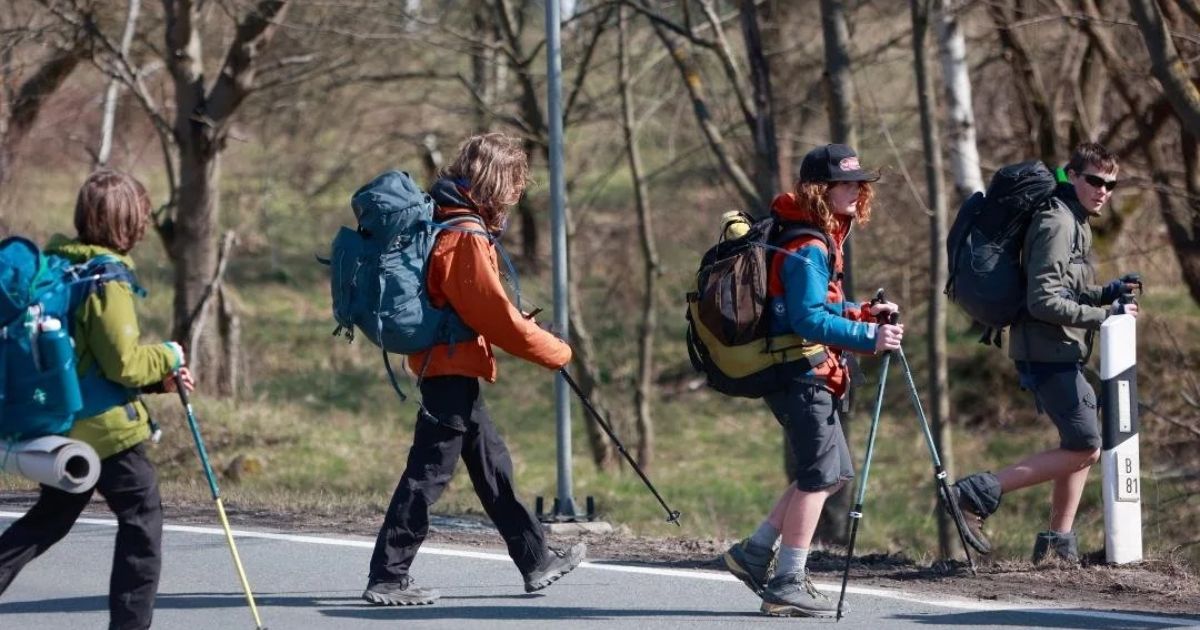In the world of wilderness therapy programs, BlueFire Wilderness has found itself at the center of a legal controversy that has sparked discussions and debates within the industry. The BlueFire Wilderness lawsuit has raised concerns among parents, professionals, and advocates, prompting a closer examination of the allegations, responses, and potential impact on the program’s operations and future.
A Closer Look at BlueFire Wilderness Complaints
When it comes to wilderness therapy programs, transparency and accountability are paramount. In the case of BlueFire Wilderness, several complaints have been brought forward by former participants and their families, shedding light on areas that may need improvement or clarification within the therapeutic environment.
One of the common grievances reported by individuals involved in the program revolves around communication protocols. Some parents have expressed concerns about the frequency and quality of updates provided by staff regarding their child’s progress and overall well-being. Effective communication is crucial in building trust and ensuring families feel informed throughout the wilderness therapy experience.
Additionally, there have been reports of participants feeling overwhelmed by the rigorous physical demands of the program, leading to questions about the appropriateness of certain activities for individuals with varying fitness levels and abilities.
Furthermore, the cost of enrollment in BlueFire Wilderness has been a point of contention for some families, who find the program financially straining. Ensuring accessibility and affordability are essential considerations for any therapeutic endeavor.
Individuals connected to BlueFire Wilderness have raised issues surrounding safety and welfare protocols, emergency response procedures, and staff training. These concerns highlight the importance of maintaining a secure and well-prepared environment for all wilderness therapy participants.
The Lawsuit: An Overview
At the heart of the matter lies a legal battle initiated by a group of former BlueFire Wilderness participants and their families. The allegations leveled against the program range from negligence and mistreatment to inadequate supervision and support.
The plaintiffs in the BlueFire Wilderness lawsuit claim that the program failed to provide a safe and nurturing environment, leading to physical and emotional harm. Specific accusations include instances of neglect, abuse, and a lack of proper medical attention when needed.
It is important to note that these are alleged claims, and BlueFire Wilderness has vehemently denied any wrongdoing. The legal process is ongoing, with both sides presenting evidence and arguments to support their respective positions.
Allegations and Controversies
The BlueFire Wilderness lawsuit has brought to light several controversies surrounding the program’s practices and protocols. One of the key allegations focuses on the lack of proper staff training and qualifications to handle the unique challenges faced by participants in a wilderness setting.
Plaintiffs claim that staff members were ill-equipped to respond to medical emergencies, mental health crises, and potentially dangerous situations that could arise in remote locations. This has raised concerns about the program’s ability to ensure the safety and welfare of its participants.
Another major allegation revolves around the alleged use of mistreatment and neglect as disciplinary measures. Former participants have reported being denied food, water, or proper shelter as punishment, which has sparked outrage among advocates and raised questions about the program’s ethical standards.
Additionally, there have been claims of inadequate supervision and monitoring, with participants allegedly left unsupervised for extended periods, putting their well-being at risk.
Client Safety in Question
One of the central issues in the BlueFire Wilderness lawsuit is the question of client safety. Several allegations have been made regarding the program’s failure to prioritize the well-being and protection of its participants.
Plaintiffs argue that BlueFire Wilderness did not follow industry-standard safety protocols, leading to instances of physical harm, emotional distress, and potential long-term trauma. Reports of inadequate medical attention, lack of proper emergency planning, and insufficient staff training have all contributed to concerns about the program’s ability to ensure a safe and secure environment.
Furthermore, there have been claims of participants being subjected to harsh conditions and treatment that could be construed as abusive or neglectful. These allegations raise serious questions about BlueFire Wilderness’s therapeutic approach’s validity and adherence to ethical practices.
Common Complaints: BlueFire Wilderness Lawsuit
As the BlueFire Wilderness lawsuit has unfolded, several common complaints have emerged from former participants and their families. Here are some of the most frequently cited issues:
Lack of communication:
Many parents have expressed frustration with the program’s failure to update their child’s progress and overall well-being regularly. Clear and frequent communication is essential in building trust and ensuring families feel informed throughout the process.
Cost concerns:
The high enrollment cost in BlueFire Wilderness has been a point of contention for some families, who find the program financially straining. Ensuring accessibility and affordability are crucial considerations in the realm of therapeutic services.
Group dynamics:
There have been instances where participants reported feeling uncomfortable or unsafe due to the dynamics within their group or interactions with certain staff members. Maintaining a supportive and nurturing environment is vital for successful wilderness therapy.
Physical demands:
Some participants have reported feeling overwhelmed by the rigorous physical demands of the program, raising concerns about the appropriateness of certain activities for individuals with varying fitness levels and abilities.
These common complaints underscore the importance of addressing concerns raised by participants and their families in a transparent and proactive manner.
Response from BlueFire Wilderness Lawsuit
In response to the mounting allegations and controversies surrounding the BlueFire Wilderness lawsuit, the program has taken steps to address the concerns and defend its practices.
BlueFire Wilderness has vehemently denied any claims of mistreatment, neglect, or abuse towards its participants. The program has asserted that it follows strict safety protocols and maintains a highly trained and qualified staff to ensure the well-being of all individuals in its care.
Additionally, BlueFire Wilderness has highlighted the therapeutic benefits and positive outcomes achieved by many participants who have completed the program. The organization has pointed to the transformative power of wilderness therapy and its commitment to providing a supportive and nurturing environment for personal growth and healing.
BlueFire Wilderness has implemented new protocols to address communication concerns to enhance transparency and keep families better informed throughout the process. The program has also expressed a willingness to review and improve its practices where necessary, acknowledging that there is always room for improvement.
However, the plaintiffs in the lawsuit remain steadfast in their pursuit of accountability and justice, alleging that BlueFire Wilderness has failed to take full responsibility for the harm caused and has not implemented sufficient reforms to prevent future incidents.
Impact on Enrollment: BlueFire Wilderness Lawsuit
The BlueFire Wilderness lawsuit has significantly impacted the program’s enrollment figures and overall reputation within the industry. As news of the legal battle spread, many families became hesitant to enroll their children in the program, citing concerns about safety and the potential for negative experiences.
This decline in enrollment has not only affected BlueFire Wilderness financially. Still, it has also raised questions about the program’s long-term viability and ability to continue offering its services at the same level.
However, it is important to note that some families have stood by BlueFire Wilderness, expressing confidence in the program’s commitment to reform and improvement. These supporters assert that the lawsuit should uphold the positive outcomes and transformative experiences many participants have encountered through the wilderness therapy approach.
Ultimately, the impact on enrollment will depend on how BlueFire Wilderness navigates the legal process, addresses the concerns raised, and demonstrates its ability to provide participants with a safe, ethical, and effective therapeutic environment.
Legal and Regulatory Actions: BlueFire Wilderness Lawsuit
In addition to the civil lawsuit filed by former participants and their families, the BlueFire Wilderness lawsuit has sparked legal and regulatory actions from various authorities and oversight bodies.
Government agencies responsible for overseeing wilderness therapy programs and ensuring compliance with industry standards have launched investigations into BlueFire Wilderness’s practices and protocols. These investigations determine whether violations occurred and whether the program adhered to the necessary safety and ethical guidelines.
BlueFire Wilderness may face penalties, fines, or mandates to implement specific reforms or changes to its operations as part of these regulatory actions. Authorities may scrutinize the program’s documentation, incident reports, staff training records, and client files to thoroughly examine the allegations’ validity.
Legal experts and advocacy groups have also called for increased transparency and accountability within the wilderness therapy industry, using the BlueFire Wilderness lawsuit as a catalyst for broader discussions and potential policy changes.
The outcome of these legal and regulatory actions will have far-reaching implications for BlueFire Wilderness and the entire wilderness therapy sector, potentially setting new standards and safeguards to ensure the well-being and protection of participants.
Improvement Measures Undertaken
In response to the mounting concerns and allegations surrounding the BlueFire Wilderness lawsuit, the program has taken several steps to address the issues raised and implement improvement measures.
One of the key areas of focus has been enhancing staff training protocols. BlueFire Wilderness has implemented more rigorous training programs to ensure that all staff members are better equipped to handle various situations, including medical emergencies, mental health crises, and potentially dangerous scenarios in the wilderness.
Additionally, the program has revised its guidelines and procedures to align more closely with industry best practices and standards. This includes updates to safety protocols, emergency response plans, and participant monitoring procedures.
To address communication concerns, BlueFire Wilderness has increased the frequency and transparency of communication between staff and parents or guardians. Regular updates on participants’ progress, well-being, and potential issues are now provided to families, fostering a more open and collaborative approach.
Furthermore, BlueFire Wilderness has taken steps to review and refine its approach to group dynamics, ensuring that participants feel safe, supported, and able to thrive in the therapeutic environment. The program has also reevaluated its physical activities and challenges to ensure they are appropriate and tailored to each participant’s needs and abilities.
While these improvement measures are ongoing, BlueFire Wilderness has expressed a commitment to continuous evaluation and adaptation, seeking to regain the trust of families and provide a safe, ethical, and effective wilderness therapy experience.
Benefits of BlueFire Wilderness Lawsuit
Despite the challenges posed by the BlueFire Wilderness lawsuit, the program continues highlighting the potential benefits of its unique approach to wilderness therapy. BlueFire Wilderness emphasizes the healing power of nature and the transformative impact of immersive outdoor experiences on personal growth and emotional well-being.
One of the key advantages touted by the program is its use of evidence-based therapy techniques combined with outdoor activities. This holistic approach aims to address mental health issues and physical wellness, fostering participants’ resilience, self-reliance, and problem-solving skills.
BlueFire Wilderness also prides itself on maintaining small group sizes, allowing personalized attention and tailored treatment plans. This individualized approach is designed to cater to each participant’s unique needs and provide a supportive community environment for learning and growth.
Additionally, the program strongly emphasizes family involvement throughout the therapy process. BlueFire Wilderness aims to facilitate long-term success and sustainable positive change by including families in therapy sessions and offering ongoing support post-program.
While the benefits touted by BlueFire Wilderness are compelling, it is essential for families to thoroughly research and evaluate the program’s current practices, safety protocols, and adherence to ethical standards before making an informed decision.
Comparison to Other Wilderness Programs
As families navigate the complex landscape of wilderness therapy programs, it is crucial to compare BlueFire Wilderness to other reputable options in the industry. Families can make informed decisions about the most suitable therapeutic environment for their loved ones by evaluating success rates, cost, accreditations, and program philosophies.
One aspect that sets BlueFire Wilderness apart is its emphasis on integrating therapy, adventure activities, and academics seamlessly. The program’s comprehensive approach addresses various aspects of personal growth and development rather than focusing solely on specific issues or challenges.
However, other wilderness therapy programs may offer distinct advantages, such as smaller group sizes, more specialized treatment approaches, or a stronger emphasis on specific therapeutic modalities like cognitive-behavioral therapy or family systems theory.
Additionally, factors like location, duration, and cost can vary significantly among different wilderness programs, making it essential for families to weigh their priorities and budgetary considerations carefully.
To make an informed decision, families must thoroughly research and compare various wilderness therapy programs’ credentials, accreditations, and success rates. Consulting with mental health professionals, reading reviews, and attending informational sessions can also provide valuable insights into the strengths and weaknesses of each option.
What is BlueFire Wilderness Therapy?
BlueFire Wilderness Therapy is a program that combines the healing power of nature with therapeutic interventions to help troubled youth overcome challenges. Located in Idaho, BlueFire offers a unique approach to therapy by immersing participants in the wilderness while providing individualized treatment plans.
Participants engage in outdoor activities like hiking, camping, and wilderness survival skills, fostering personal growth, self-discovery, and a connection with the natural environment. The program focuses on building essential life skills such as communication, problem-solving, emotional regulation, and resilience through hands-on natural experiences.
Therapists at BlueFire use evidence-based practices, such as cognitive-behavioral therapy, to address underlying issues like trauma, substance abuse, behavioral problems, and mental health concerns. By combining traditional medicine with outdoor adventure, BlueFire aims to help young individuals develop coping mechanisms, build self-confidence, and improve their overall well-being.
The wilderness setting allows participants to disconnect from distractions and connect with themselves on a deeper level. Through guided experiences in the natural environment, individuals can gain valuable insights into their thoughts, feelings, and behaviors, fostering self-awareness and personal growth.
While BlueFire Wilderness Therapy has faced legal challenges and scrutiny, the program continues to emphasize its commitment to providing participants with a supportive and transformative experience, focusing on safety, ethics, and positive outcomes.
Read More: What Makes the Movierulz UI Stand Out for US audiences?
Conclusion
The BlueFire Wilderness lawsuit has ignited crucial discussions within the wilderness therapy industry, shedding light on allegations of mistreatment and safety concerns. Families are urged to carefully research and evaluate their options when considering such programs, considering the implications of the legal battle on BlueFire Wilderness’s future and the broader industry.
Families need to stay informed about the lawsuit’s developments and seek guidance to make informed decisions about the suitability of wilderness therapy programs. Regardless of the lawsuit’s outcome, it underscores the need for transparency, accountability, and ethical practices in wilderness therapy. Safety protocols and staff training must be robust, and a commitment to participants’ well-being is paramount.
As the legal process unfolds, stakeholders must engage in constructive dialogue to prioritize safety and uphold ethical standards. Ultimately, the lawsuit emphasizes that personal growth should never compromise well-being, prompting the industry to continuously reflect, adapt, and improve.











